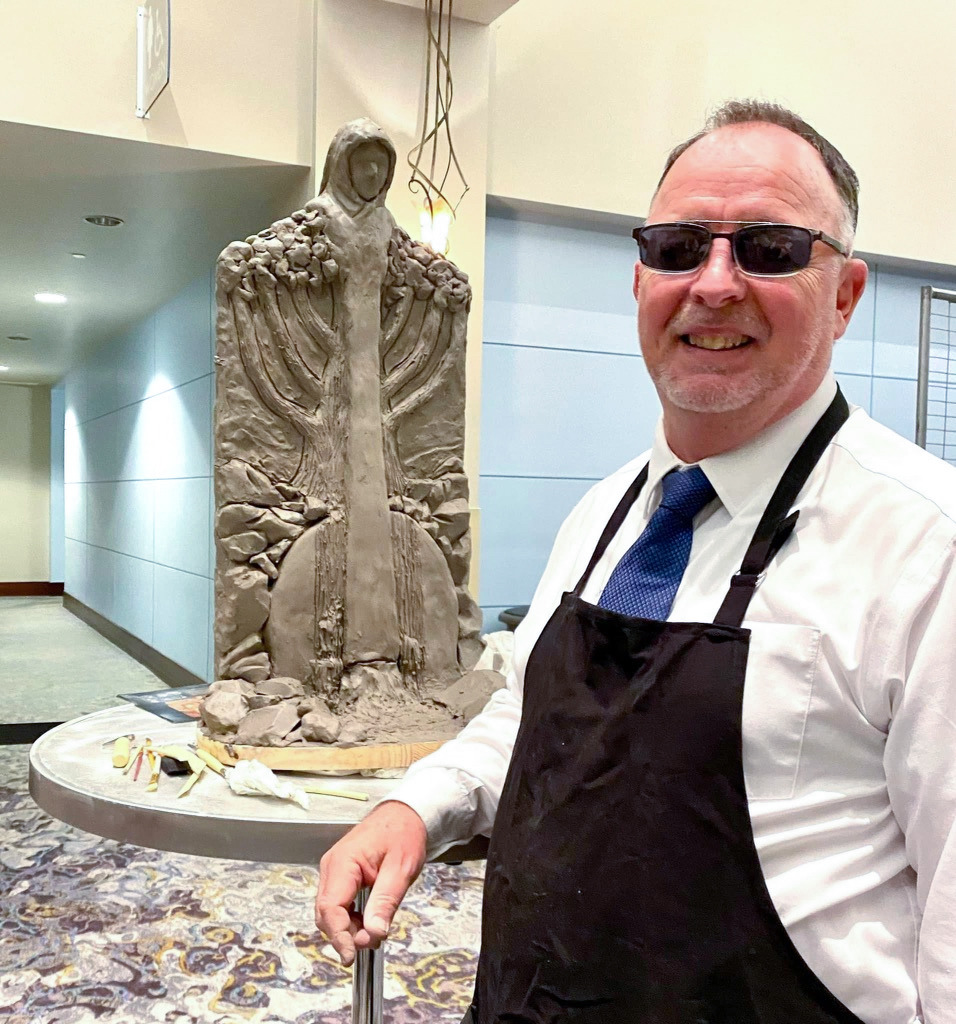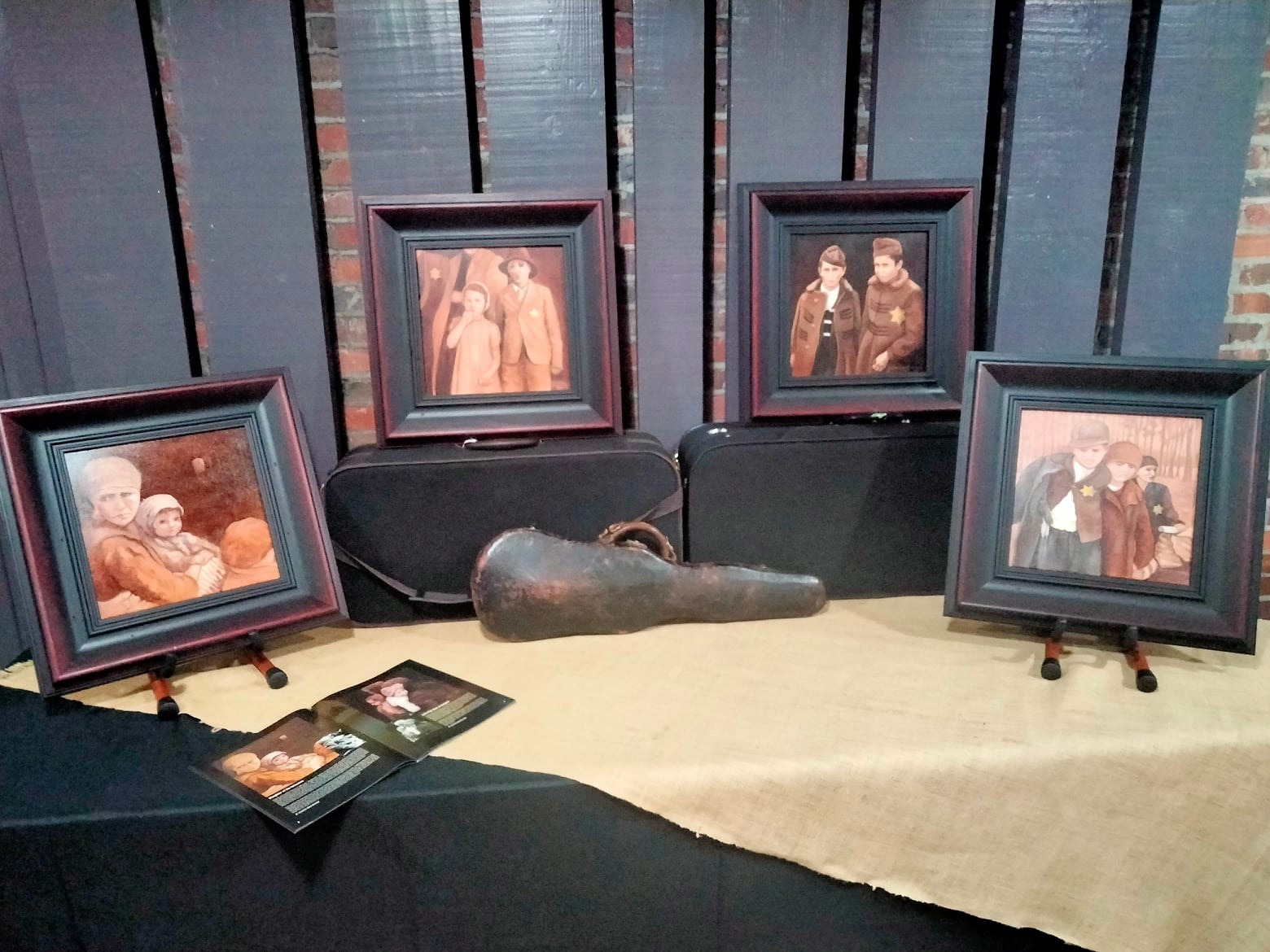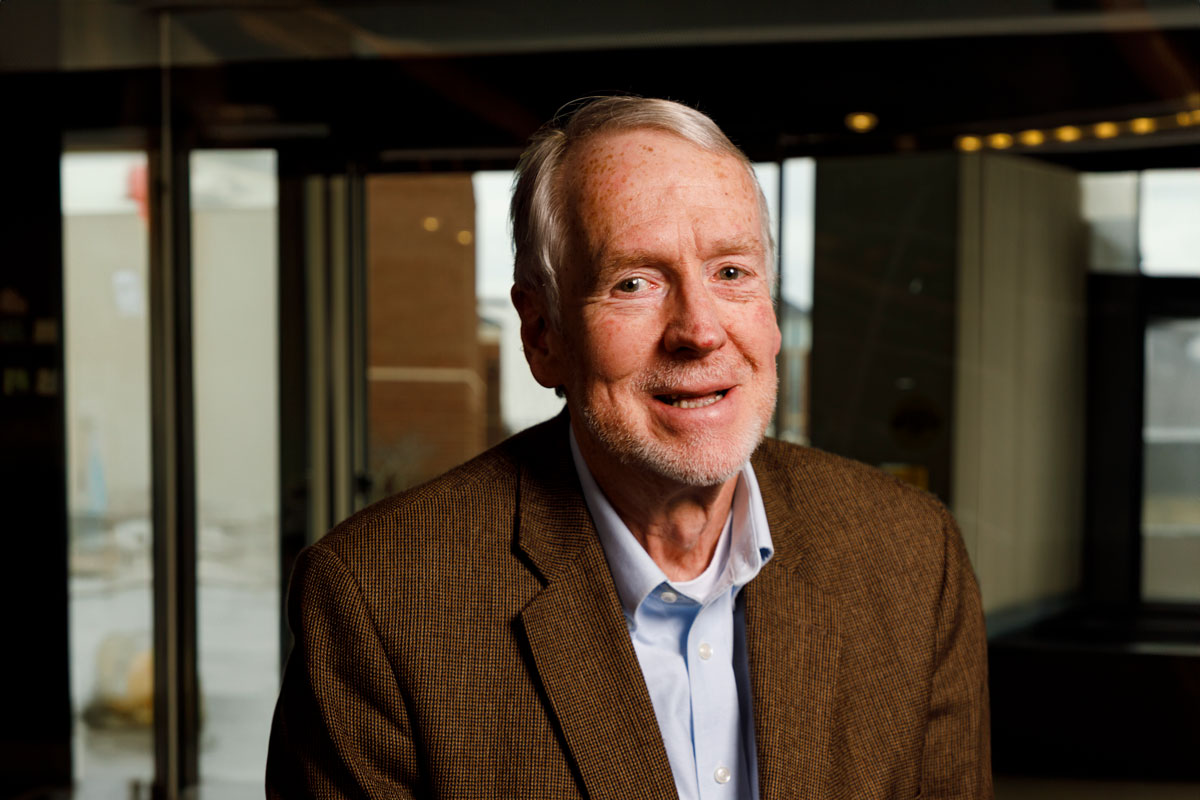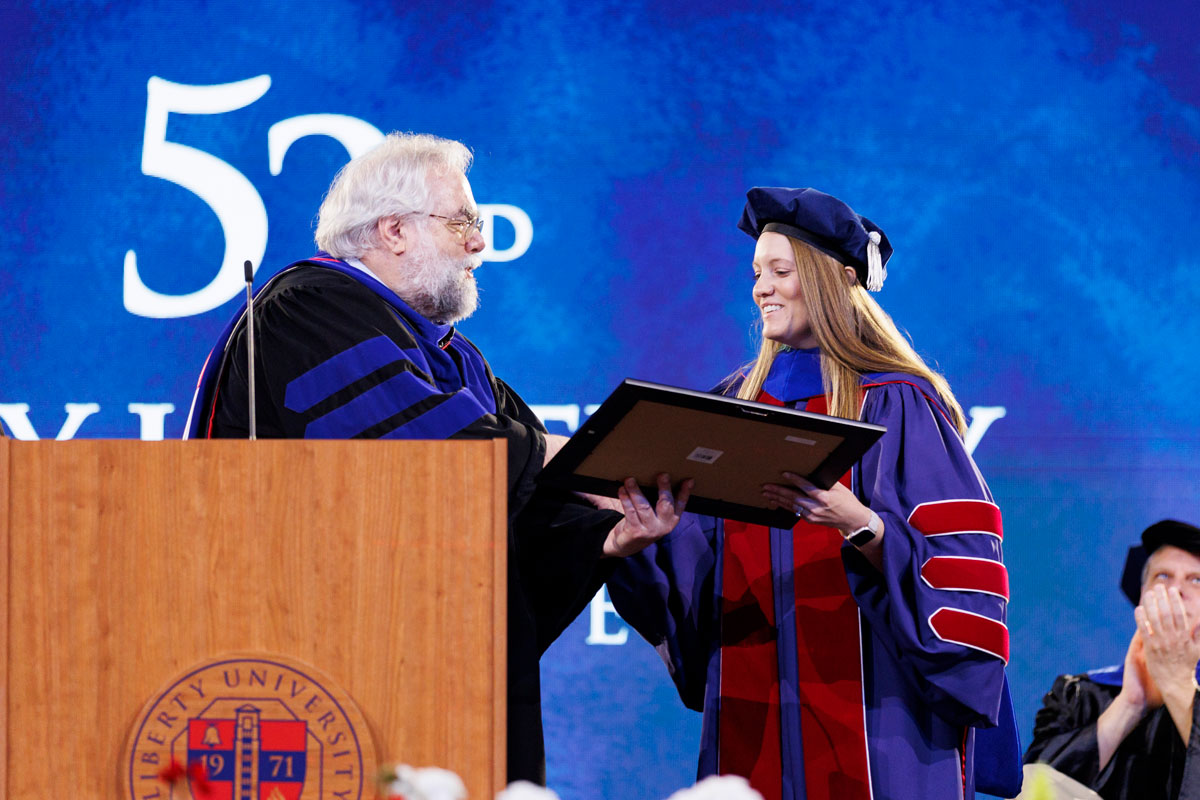Search News Archives
Filter News Articles
Additional Navigation
Liberty art professor does live sculpting during Holocaust remembrance event
June 22, 2022 : By Ryan Klinker - Office of Communications & Public Engagement

Todd Smith, chair of Liberty University’s Department of Studio & Digital Arts and director of the Liberty University Liberty University Art Gallery, participated as both an artist and curator during a series of April events focused on the powerful stories of those personally affected by the Holocaust and the impact that the unspeakable tragedy still carries today.
From April 21-29, Smith attended Holocaust remembrance events in Myrtle Beach and Charleston, S.C., where he sculpted live for guests. He also brought with him a 40-piece series from Liberty’s permanent collection titled “The Auschwitz Album Revisited,” which depicts the final moments of life for Jewish victims at one of the Holocaust’s most notorious concentration camps. Smith sculpted while a violinist performed and the paintings were displayed around them.
Violins of Hope and Varna International organized the events, which were held throughout South Carolina with the goal of reclaiming the art and joy that often comes through the sound of a violin and to bring awareness to anti-Semitism.
Painted by the late Christian artist Pat Mercer Hutchens, the pieces from Liberty’s collection were based on photos found in the Auschwitz Album, a collection of photographs taken by Nazi SS officers during the “selection” process for Jews as they arrived to the concentration camp by train. The paintings are part of the Liberty University Permanent Collection, where they were displayed in 2020 and have also been shown at the National Holocaust Museum in Ukraine, the Jewish Community Center at Auschwitz, and many other galleries internationally. Jerusalem Connection, which was founded by the late Jim Hutchens, also partnered with Violins of Hope and Varna International during the events.

For his sculpture, Smith incorporated visual elements from the Auschwitz Album paintings and sculpted them in clay on one side and an original concept on the other. On one side is imagery of the Holocaust — a train station, clouds of smoke, a seated rabbi, and a woman holding her baby. The smoke turns into leaves as it transitions to the other side where he sculpted a Holocaust survivor, a tree-shaped menorah, and a violin surrounded by a cliff with a cascading a waterfall and stream, all symbolizing hope and healing for the Jewish people.
“I wanted the sculpture to have a narrative approach, so one side shows the tragedy of the Holocaust and the opposite side shows the hope of the Jewish people,” he said.
“Throughout the duration of the events, hundreds of people viewed the Auschwitz Album paintings and violins and watched the sculpture develop. The exhibition was very moving and thought provoking because, as you can imagine, a wide variety of emotions are experienced during an exhibit like this. The reactions that stood out most to me were when viewers would weep. It was very moving for me, too, especially meeting holocaust survivors who were in attendance.”
While he sculpted, Smith was able to talk with the guests about the sculpture and the Auschwitz Album paintings.
“Over the years I’ve created artwork in various settings such as worship services, Liberty University convocations, classes and outdoor venues. This was the first time I had to function as both artist and curator, taking on the role of educating viewers about the exhibition, while simultaneously narrating in clay” Smith said. “The two worked well together and were very interactive. It was an incredible experience and an honor to be involved.”
The events ranged from exhibits, concerts, and speakers and were held in different venues. Smith sculpted twice during exhibits and concerts at a train station in Myrtle Beach and at a concert hall in Charleston.
Violins of Hope brings a collection of over 60 violins, violas, and cellos that once belonged to Jews before and during World War II and the Holocaust. Many of the instruments were donated by or bought from survivors. Musicians played the same violins once played at Auschwitz while it was active, often before the Jewish victims were led to their deaths. During the events, guests were able to hear some of the backstories about particular violins.
Following the completion of the new Art Gallery space in Marie F. Green Hall, visitors to Liberty’s campus will be able to view the “Auschwitz Album Revisited” paintings firsthand when on display. The full collection is also available digitally.


